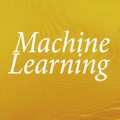Physics-informed Machine Learning has recently become attractive for learning physical parameters and features from simulation and observation data. However, most existing methods do not ensure that the physics, such as balance laws (e.g., mass, momentum, energy conservation), are constrained. Some recent works (e.g., physics-informed neural networks) softly enforce physics constraints by including partial differential equation (PDE)-based loss functions but need re-discretization of the PDEs using auto-differentiation. Training these neural nets on observational data showed that one could solve forward and inverse problems in one shot. They evaluate the state variables and the parameters in a PDE. This re-discretization of PDEs is not necessarily an attractive option for domain scientists that work with physics-based codes that have been developed for decades with sophisticated discretization techniques to solve complex process models and advanced equations of state. This paper proposes a physics constrained machine learning framework, AdjointNet, allowing domain scientists to embed their physics code in neural network training workflows. This embedding ensures that physics is constrained everywhere in the domain. Additionally, the mathematical properties such as consistency, stability, and convergence vital to the numerical solution of a PDE are still satisfied. We show that the proposed AdjointNet framework can be used for parameter estimation (and uncertainty quantification by extension) and experimental design using active learning. The applicability of our framework is demonstrated for four flow cases. Results show that AdjointNet-based inversion can estimate process model parameters with reasonable accuracy. These examples demonstrate the applicability of using existing software with no changes in source code to perform accurate and reliable inversion of model parameters.
翻译:最近的一些工程(例如物理学知情神经网络)软性地强制实施物理限制,包括部分差异方程(PDE)损失功能,但需要使用自动差异化来重新分解PDEs。对观测数据的神经网进行的培训表明,人们可以一次解决前向和反向问题。它们评价PDE中的国家变量和参数。PDEs的重新分解不一定是一个对域科学家具有吸引力的选择。此外,使用基于物理的代码进行工作,这些代码已经开发了数十年,采用复杂的离散技术来解决复杂的进程模型和先进的状态方程。本文提出一个物理限制的机器学习框架,AdcomitiveNet,允许域科学家将其物理代码嵌入以内线为基础的网络培训流程。这种嵌入可以确保物理在域域内的可应用性变量和参数的可应用性。此外,数学模型的稳定性和精确性数据化框架可以显示,我们使用的数学模型的稳定性和精确性数据化框架可以显示,我们使用的数学模型的稳定性和精确性模型的稳定性,我们使用的模型的稳定性和精确性框架可以用来证明。



